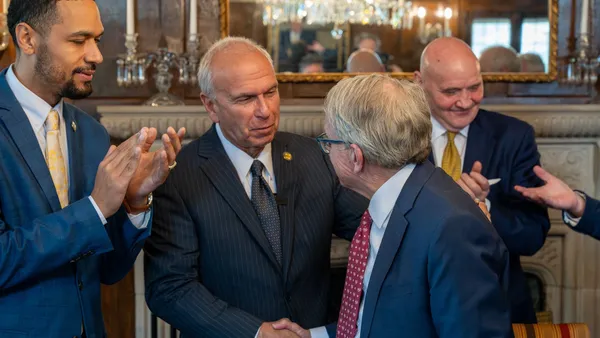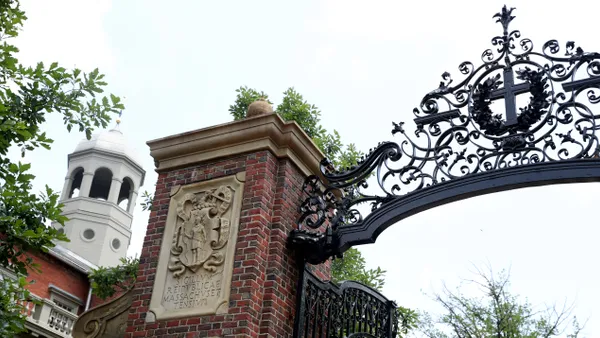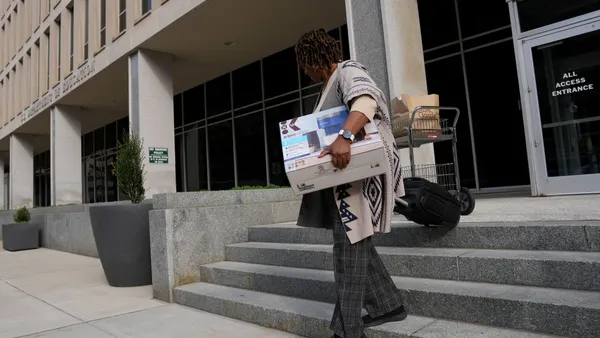Dive Brief:
- The credit-rating agency Moody's downgraded the outlook of the higher education sector from stable to negative, reports the Chronicle of Higher Education.
- Moody's cites the industry's inability to lower tuition rates and uncertainty around potential federal policy and tax reform changes, which could have an impact on "enrollment and tuition-revenue growth, philanthropic support and the cost of borrowing."
- Moody's assigned a negative rating to the sector in 2013, but amended it to stable two years later in anticipation that states would increase funding and revenue would grow at four-year institutions.
Dive Insight:
With the election of Donald Trump — which Education Dive named "Disruption of the Year" for its 2017 Dive Awards — it is even more unclear what types of policy and tax reform changes could potentially impact higher ed. The topic generating the most conversation in higher ed circles is the proposal to tax endowments of private institutions with more than 500 students and endowment assets of more than $250,000 and $500,000 in the House and Senate bills respectively, per full-time enrollee.
Likewise, the potential outcomes of the Higher Education Act — now back on the table — has the industry on even more precarious footing in terms of finances, as Republicans have made clear they want institutions to provide student ROI. Specifically, the bill’s proposed penalties would force institutions to use their endowment funds to make college more affordable for more students.
Meanwhile, institutions will continue to seek ways to cut costs. For instance, Connecticut recently announced plans to consolidate all 12 of its community colleges under a single system, after Wisconsin proposed to merge the University of Wisconsin's two-year colleges into its four-year institutions.
Free speech issues and campus protests will continue to capture headlines, with recent research indicating students are more politicized than at any point in the last five decades. Colleges have spent upwards of hundreds of thousands of dollars for security for controversial speakers and protests, while administrators have come under scrutiny for how they respond these issues. For example, Evergreen State College — which shut down the campus due to unrest — now faces a potential bill to have its public funding stripped and has seen a 4.5% drop in enrollment this year.
To tackle these realities, presidents and administrators will need to show students their safety and security are top priorities. A recent study from researchers at the University at Albany offers six tips for presidents handling emergencies. These include creating pre-conditions that facilitate collaboration during an incident, effectively interpreting the complex context of the unrest, fast response and targeted decision making, extending information to stakeholders and constituents on decisions carried out, figuring out the right moment to shut-down the crisis and learning from, as well as documenting, the event to enhance safety and performance.
As tuition and other costs rise, leaders at pubic colleges need to continue to work with legislators to prove value to how they are addressing student ROI. One strategy being discussed is performance-based funding, where state policymakers would work out a plan with institutions to offer funding based on whether certain achievement benchmarks have been met. Institutions also are looking at alternative sources of funding, such as Purdue University's purchase of for-profit Kaplan, which Education Dive named Innovation of the Year.













